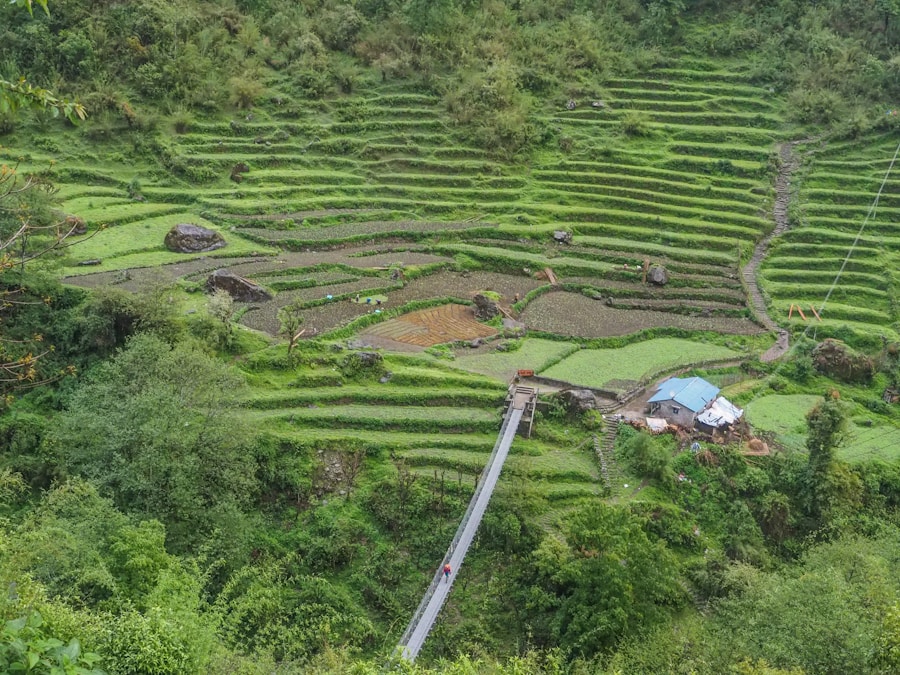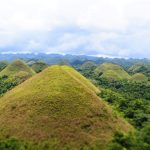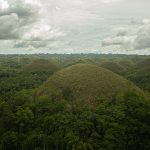Banaue Rice Terraces: A Marvel of Ancient Agricultural Engineering
Description
Nestled in the mountainous region of the Philippines, the Banaue Rice Terraces are often referred to as the “Eighth Wonder of the World.” This breathtaking landscape, carved into the mountainsides over 2,000 years ago, showcases the ingenuity and resilience of the Ifugao people, who have cultivated rice in these terraces for generations. The terraces stretch over 2,000 square kilometers and rise to elevations of about 1,500 meters above sea level, creating a stunning visual tapestry of verdant green fields that cascade down the mountains. The intricate system of terraces not only serves as a testament to agricultural innovation but also reflects the deep cultural heritage and spiritual beliefs of the Ifugao community.
The Banaue Rice Terraces are more than just a remarkable feat of engineering; they represent a harmonious relationship between humans and nature. The terraces are designed to maximize agricultural productivity while minimizing soil erosion and water runoff. This sustainable farming practice has allowed the Ifugao people to thrive in a challenging environment, where steep slopes and unpredictable weather conditions pose significant challenges.
The terraces are not merely functional; they are also a source of pride and identity for the Ifugao, embodying their ancestral wisdom and connection to the land.
Key Takeaways
- The Banaue Rice Terraces are a UNESCO World Heritage site and are often referred to as the “Eighth Wonder of the World.”
- The terraces were built over 2,000 years ago by the Ifugao people and are a testament to their engineering and agricultural skills.
- The construction of the terraces involved the use of stone and mud walls to create flat platforms on the steep mountainsides, allowing for the cultivation of rice.
- Preservation efforts for the terraces face challenges such as environmental degradation, population decline, and modernization.
- Tourism has become a major source of income for the local community, but it also brings challenges such as overdevelopment and cultural commodification.
History and cultural significance of the Banaue Rice Terraces
Agriculture and Culture Intertwined
The terraces are not just agricultural fields; they are a living testament to the Ifugao’s rich cultural heritage, reflecting their customs, beliefs, and social structures. The cultural significance of the Banaue Rice Terraces extends beyond their agricultural function, as they are deeply intertwined with the spiritual beliefs of the Ifugao people, who view rice as a sacred crop.
Spiritual Significance and Communal Practices
The terraces are often associated with rituals and ceremonies that honor ancestral spirits and seek blessings for bountiful harvests. The Ifugao’s traditional practices, such as the “punnuk” or rice planting festival, highlight the communal aspect of rice cultivation, where families and neighbors come together to celebrate and give thanks for the land’s bounty.
A Sense of Identity and Continuity
This cultural connection to the terraces fosters a sense of identity and continuity among the Ifugao people, reinforcing their ties to their ancestors and their land.
Engineering and construction of the Banaue Rice Terraces

The engineering prowess demonstrated in the construction of the Banaue Rice Terraces is nothing short of remarkable. The terraces were built using simple tools and techniques that have been passed down through generations.
This meticulous planning ensures that each terrace receives adequate water while preventing soil erosion—a critical factor in maintaining the fertility of these fields. The construction process itself is a testament to the ingenuity of the Ifugao people. Workers would first clear the land of vegetation before carving out flat areas on steep slopes.
The terraces are designed with a slight gradient to facilitate drainage while ensuring that water flows evenly across each field. This intricate system not only maximizes agricultural output but also demonstrates a profound understanding of hydrology and soil conservation.
The engineering techniques employed in the Banaue Rice Terraces have garnered admiration from experts worldwide, highlighting the sophistication of indigenous agricultural practices.
Preservation efforts and challenges facing the Banaue Rice Terraces
| Challenges | Efforts |
|---|---|
| Soil erosion | Implementation of terrace wall maintenance and repair |
| Declining traditional farming practices | Training programs for farmers on traditional rice terrace cultivation techniques |
| Population decline in the region | Community-based tourism initiatives to generate income for terrace maintenance |
| Climate change impact | Introduction of climate-resilient rice varieties |
| Infrastructure development | Collaboration with government agencies to regulate construction near the terraces |
Despite their historical and cultural significance, the Banaue Rice Terraces face numerous challenges that threaten their preservation. One of the most pressing issues is climate change, which has led to unpredictable weather patterns, including prolonged droughts and heavy rainfall. These changes can disrupt traditional farming practices, making it increasingly difficult for farmers to maintain their crops and sustain their livelihoods.
Additionally, younger generations are migrating to urban areas in search of better opportunities, leading to a decline in traditional farming practices and knowledge. Efforts to preserve the Banaue Rice Terraces have been initiated by various stakeholders, including local government units, non-governmental organizations, and community groups. These initiatives focus on promoting sustainable agricultural practices, providing training for farmers, and raising awareness about the cultural significance of the terraces.
For instance, programs aimed at revitalizing traditional farming techniques have been implemented to encourage younger generations to engage with their heritage. Furthermore, partnerships with international organizations have facilitated funding for restoration projects aimed at repairing damaged terraces and improving irrigation systems. However, these efforts face significant hurdles due to limited resources and competing economic interests.
Tourism and economic impact of the Banaue Rice Terraces
Tourism plays a crucial role in the economy of Banaue and surrounding areas, with visitors flocking to witness the stunning beauty of the rice terraces. The UNESCO World Heritage designation granted in 1995 has further elevated their status as a global tourist destination. Tourists are drawn not only by the picturesque landscapes but also by opportunities to engage with local culture through guided tours, homestays, and cultural performances.
This influx of visitors has provided a vital source of income for many local families who rely on tourism-related activities. However, while tourism brings economic benefits, it also poses challenges for the preservation of the terraces. Increased foot traffic can lead to soil erosion and damage to the delicate irrigation systems that sustain rice cultivation.
Moreover, there is a risk that commercialization may dilute the cultural authenticity of the Ifugao people’s traditions as they adapt their practices to cater to tourist expectations. Striking a balance between promoting tourism and preserving cultural heritage is essential for ensuring that future generations can continue to enjoy both the beauty of the terraces and the rich traditions associated with them.
Future prospects for the Banaue Rice Terraces

Sustainable Agriculture and Climate Resilience
As climate change poses significant threats to traditional farming practices, innovative solutions must be explored to enhance resilience among local farmers. This may include integrating modern agricultural techniques with traditional knowledge to create adaptive strategies that can withstand changing environmental conditions.
Cultural Preservation and Community Engagement
Fostering a sense of pride among younger generations is crucial for ensuring that traditional practices endure. Educational programs that emphasize the importance of cultural heritage can inspire youth to remain connected to their roots while exploring new opportunities within their communities. Collaborative efforts between local governments, NGOs, and international organizations can facilitate capacity-building initiatives that empower farmers and promote sustainable tourism practices.
A Collective Commitment to Preservation
Ultimately, preserving the Banaue Rice Terraces requires a collective commitment from all stakeholders involved—local communities, government agencies, tourists, and conservationists alike. By recognizing their historical significance and embracing innovative approaches to agriculture and tourism, there is hope for a future where these iconic terraces continue to thrive as both an agricultural marvel and a cultural treasure for generations to come.
FAQs
What are the Banaue Rice Terraces?
The Banaue Rice Terraces are ancient terraces carved into the mountains of Ifugao in the Philippines. They are often referred to as the “Eighth Wonder of the World” and are a UNESCO World Heritage Site.
How were the Banaue Rice Terraces created?
The terraces were hand-carved over 2,000 years ago by the Ifugao people using minimal equipment, such as stones and wood. They were created to make the mountainous terrain suitable for rice cultivation.
What is the significance of the Banaue Rice Terraces?
The terraces are not only a stunning example of ancient engineering and agricultural practices, but they also hold cultural and historical significance for the Ifugao people. They are a symbol of their heritage and connection to the land.
How big are the Banaue Rice Terraces?
The terraces cover approximately 10,360 square kilometers of mountainside and are estimated to stretch about 20,000 kilometers if laid end to end.
Can visitors explore the Banaue Rice Terraces?
Yes, visitors are welcome to explore the terraces and there are hiking trails that offer stunning views of the landscape. However, it is important to respect the local customs and environment while visiting.





